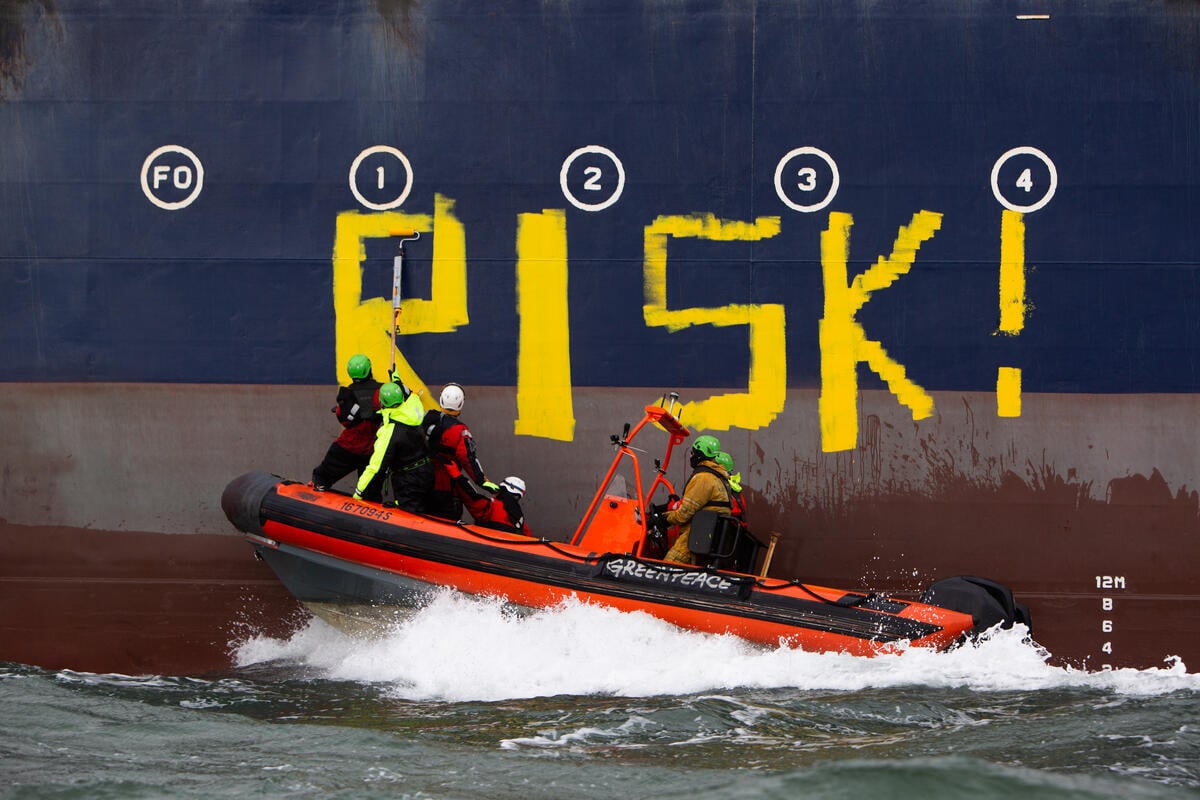Nuclear power is often hailed as a magic bullet solution for the rapid and large-scale decarbonisation of our societies which we all know needs to happen if we have any hope of mitigating the worst effects of the unfolding climate emergency. Among politicians and industry groups, it is consistently favoured over meaningful investment in renewable energy systems, bolstered with misleading claims of its safety, efficiency, stability, and speed of deployment.
With the costs and efficiency of renewable energy solutions improving year on year, and the effects of our rapidly changing climate accelerating across the globe, we need to take an honest look at some of the myths being perpetuated by the nuclear industry and its supporters. Here are six reasons why nuclear power is not the way to a green and peaceful zero carbon future.
1. Nuclear energy delivers too little to matter
In order to tackle climate change, we need to reduce fossil fuels in the total energy mix well before 2050 to 0%.
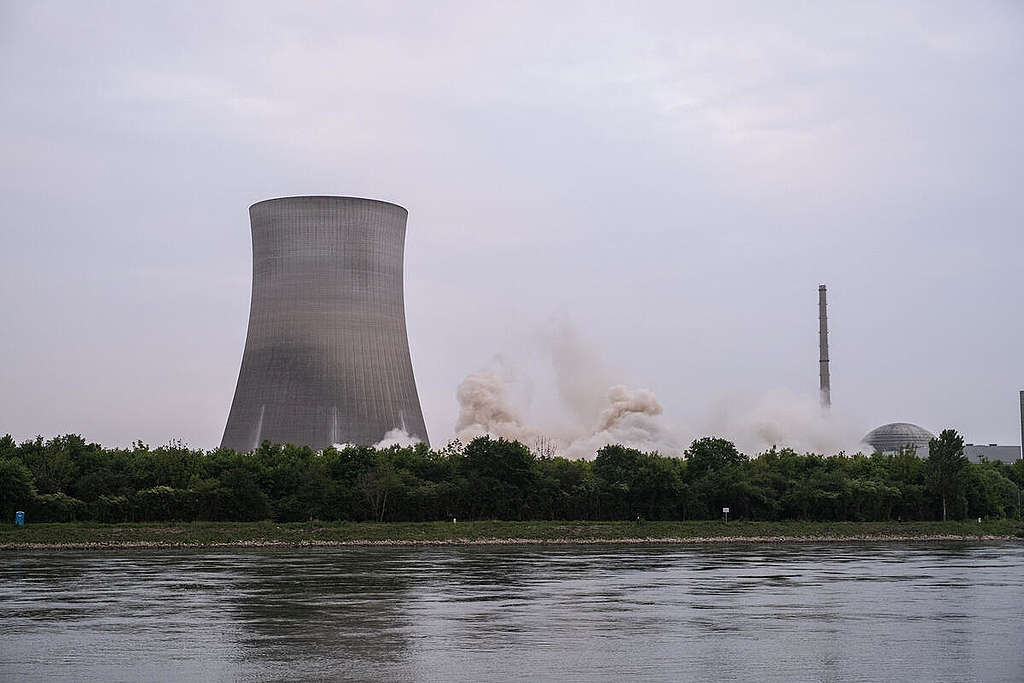
According to scenarios from the World Nuclear Association and the OECD Nuclear Energy Agency (both nuclear lobby organisations), doubling the capacity of nuclear power worldwide in 2050 would only decrease greenhouse gas emissions by around 4%. But in order to do that, the world would need to bring 37 new large nuclear reactors to the grid every year from now, year on year, until 2050.
The last decade only showed a few to 10 new grid connections per year. Ramping that up to 37 is physically impossible – there is not sufficient capacity to make large forgings like reactor vessels. There are currently only 57 new reactors under construction or planned for the coming one-and-a-half decade. Doubling nuclear capacity – different from the explosive growth of clean renewable energy sources like solar and wind – is therefore unrealistic. And that for only 4% when we already need to reduce 100%.
2. Nuclear power plants are dangerous and vulnerable
Nuclear factories and plants are easy targets for malevolent acts: terrorist threats, the risk of unintentional or voluntary airliner crashes, cyberattacks or acts of war. The enclosures of plants and certain ancillary buildings containing radioactive materials are not designed to withstand this type of attack or shock.
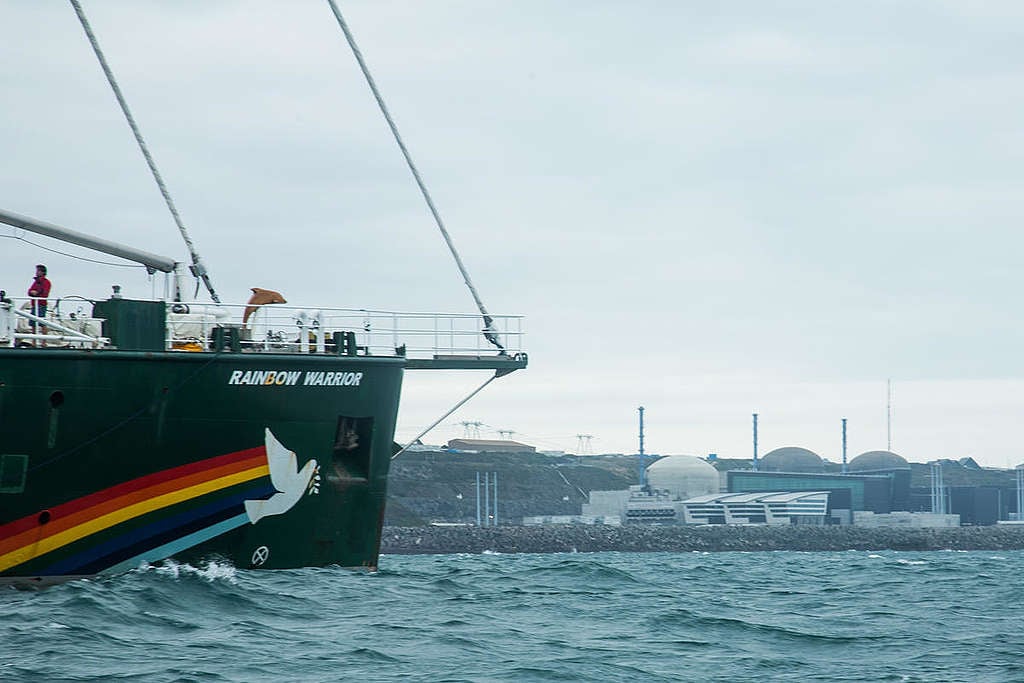
Nuclear power plants present unique hazards in terms of the potential consequences resulting from a severe accident. Nuclear reactors and their associated high level spent fuel stores are vulnerable to natural disasters, as Fukushima Daiichi showed, but they are also vulnerable in times of military conflict.
For the first time in history, a major war is being waged in a country with multiple nuclear reactors and thousands of tons of highly radioactive spent fuel. The war in southern Ukraine around Zaporizhzhia puts them all at heightened risk of a severe accident.
Nuclear power plants are some of the most complex and sensitive industrial installations, which require a very complex set of resources in ready state at all times to keep them operational. This cannot be guaranteed in a war.
This can’t be guaranteed in a time of climate crisis and extreme weather events either. Nuclear power is a water-hungry technology. Nuclear power plants consume a lot of water for cooling. They are vulnerable to water stress, the warming of rivers, and rising temperatures, which can weaken the cooling of power plants and equipment. Nuclear reactors in the United States and France are often shut down during heatwaves, or see their activity drastically slowed.
3. Nuclear energy is too expensive
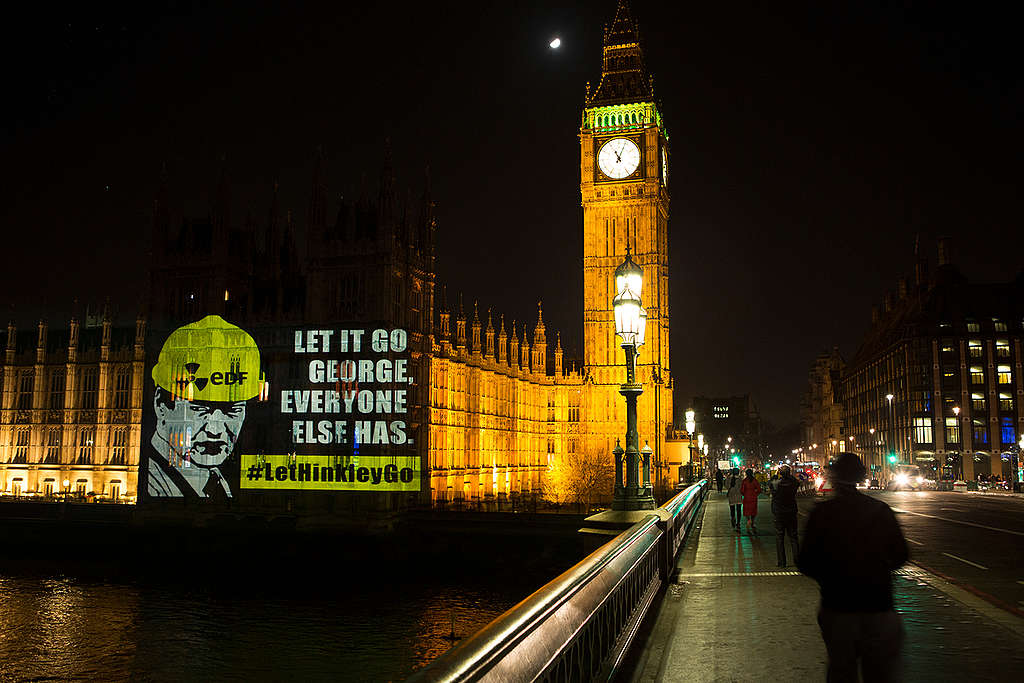
To protect the climate, we must abate the most carbon at the least cost and in the least time.
The cost of generating solar power ranges from $36 to $44 per megawatt-hour (MWh), the World Nuclear Industry Status Report said, while onshore wind power comes in at $29–$56 per MWh. Nuclear energy costs between $112 and $189 per MWh.
Over the past decade, the World Nuclear Industry Status Report estimates levelised costs – which compare the total lifetime cost of building and running a plant to lifetime output – for utility-scale solar have dropped by 88% and for wind by 69%. According to the same report, these costs have increased by 23% for nuclear.*
According to a November 2021 study released by Greenpeace France and the Rousseau Institute, power from the under-construction European Pressurised Reactor (EPR) at Flamanville in France would be 3 times as expensive as the country’s most competitive renewable sources.
4. Nuclear energy is too slow
Stabilising the climate is an emergency. Nuclear power is slow.
The 2021 World Nuclear Industry Status Report estimates that since 2009 the average construction time for reactors worldwide was just under 10 years, well above the estimate given by the World Nuclear Association (WNA) industry body of between 5 and 8.5 years.
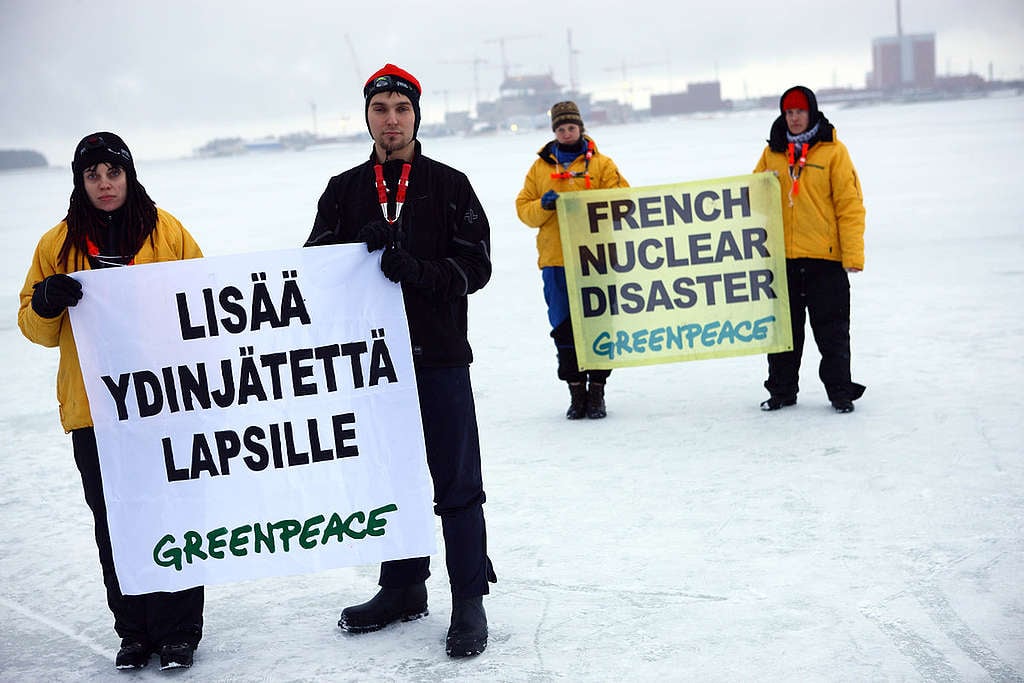
The extra time that nuclear plants take to build has major implications for climate goals, as existing fossil-fueled plants continue to emit CO2 while awaiting substitution. The construction of a nuclear plant is a long and complex process that obviously releases CO2, as does the demolition of decommissioned nuclear sites.
Uranium extraction, transport and processing is obviously not free of greenhouse gas emissions either. All in all, nuclear power stations score comparable with wind and solar energy. But this latter can be implemented much faster and on a much bigger scale. We cannot wait for another decade for emissions to go down. They need to go down now. With clean renewable sources and energy efficiency, we can do that.
5. Nuclear energy generates huge amounts of toxic waste
The multiple stages of the nuclear fuel cycle produce large volumes of radioactive waste. No government has yet resolved how to safely manage this waste.

Some of this nuclear waste is highly radioactive and will remain so for several thousand years. Nuclear waste is a real scourge for our environment and for future generations, who will still have the responsibility of managing it in several centuries.
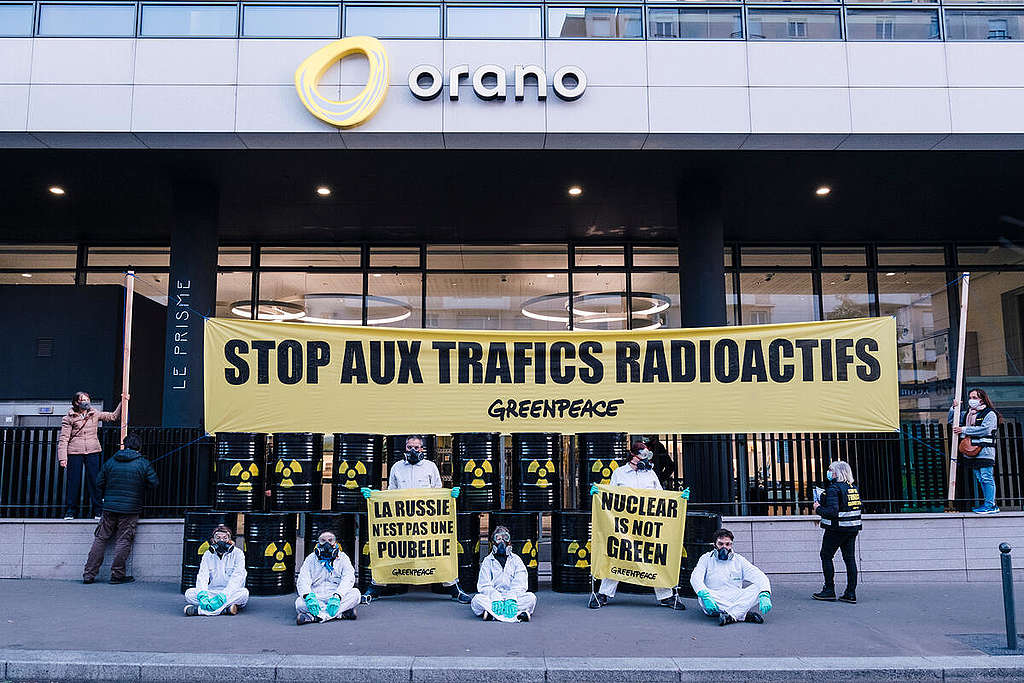
Countries like France are pushing hard for nuclear power at the EU level, hoping that when it comes to waste, out of sight is out of mind. But nuclear waste will never go away, and will never be sustainable.
This is one of the obvious reasons why nuclear power shouldn’t be eligible for green funding nor marketed as ‘sustainable’, as pointed out recently by countries like Austria, Denmark, Germany, Luxembourg, and Spain, who spoke against the inclusion of nuclear power in the EU’s green finance taxonomy. This is also one of the reasons why, on 9 March 2020, the EU Commission’s Technical Expert Group on Sustainable Finance (TEF) rejected nuclear energy because it did not meet the EU’s ‘Do No Significant Harm’ principle and recommended excluding nuclear power from the green taxonomy.
Nuclear waste management is costing taxpayers absurd amounts of money, costs for storage projects reaching into the billions. This is true both for Europe and North America. In 2019, a US Energy Department report showed the projected cost for long-term nuclear waste cleanup jumped more than $100 billion in just one year.
6. The nuclear industry is falling short of its promises
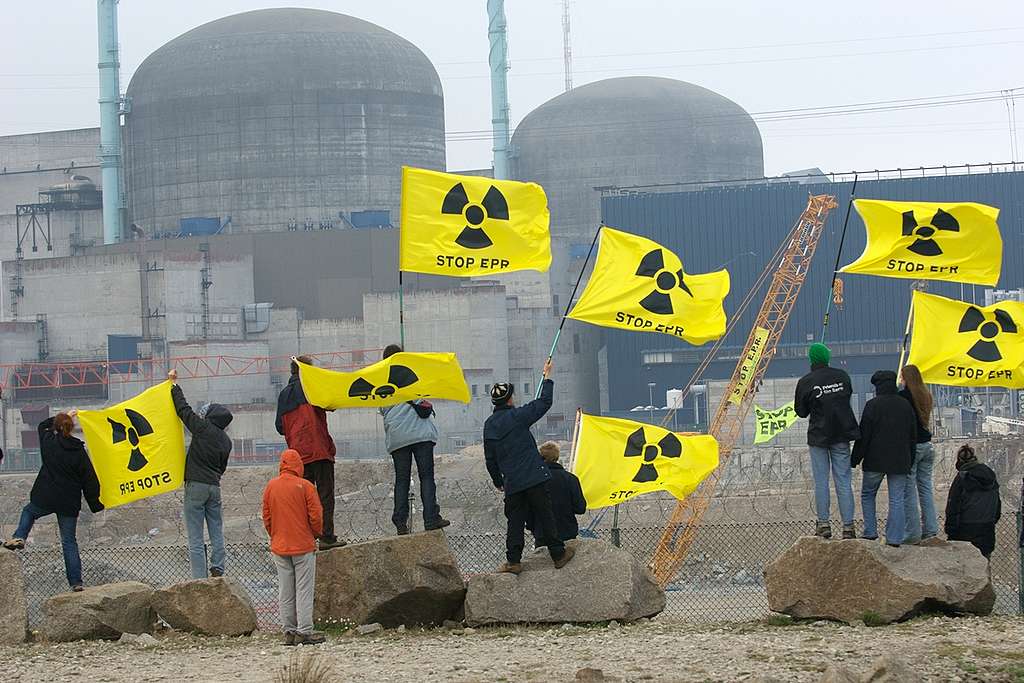
The EPR nuclear reactor technology has been showcased by the French government and French nuclear operator EDF as a revolutionary technology announcing the dawn of a nuclear renaissance. The reality is that this technology isn’t any kind of technological leap. More importantly, the French EPR reactor located in Flamanville is more than 10 years overdue and nearly four times over budget.
This so-called “next-generation nuclear reactor”, has also sustained multiple problems, delays and cost overruns in France, the United Kingdom, Finland and China.
Hypothetical new nuclear power technologies have been promised to be the next big thing for the last forty years, but in spite of massive public subsidies, that prospect has never panned out. That is also true for Small Modular Reactors (SMRs).
And for nuclear fusion, an idea that is as old as the nuclear industry, which somehow always seems to be fifty years away. The cost and uncertainty of fusion mean investing in thermonuclear reactors at the expense of other available clean energy options. This technology won’t arrive in time, if ever, and the money would be better invested elsewhere.
Let’s exert the utmost caution when presented with pro-nuclear opinions coming from experts and organisations regularly working with stakeholders from the nuclear sector and potentially tainted by vested interests. Nuclear energy has no place in a safe, clean, sustainable future. It is more important than ever that we steer away from false solutions and leave nuclear power in the past.
Mehdi Leman is a content editor for Greenpeace International based in France


